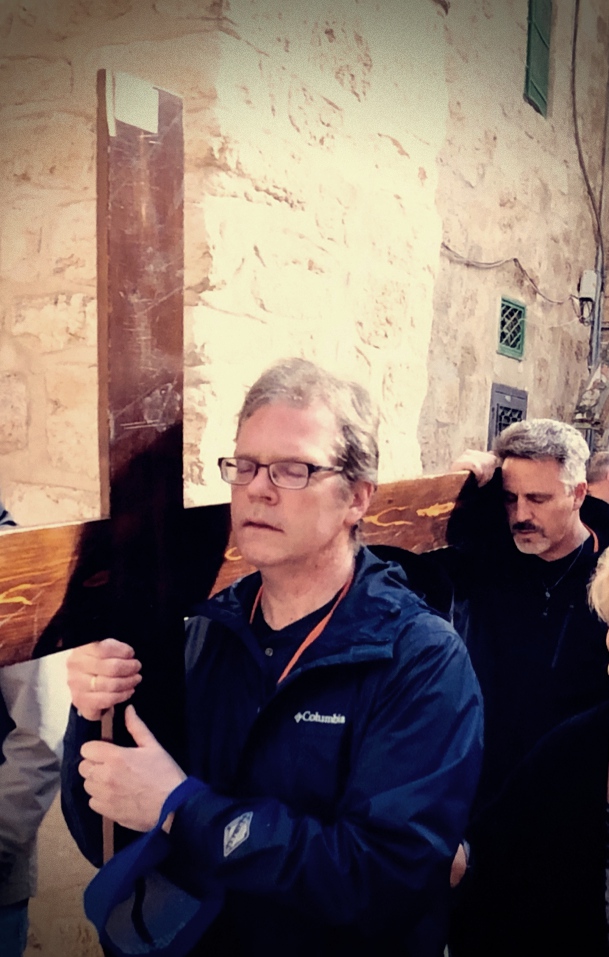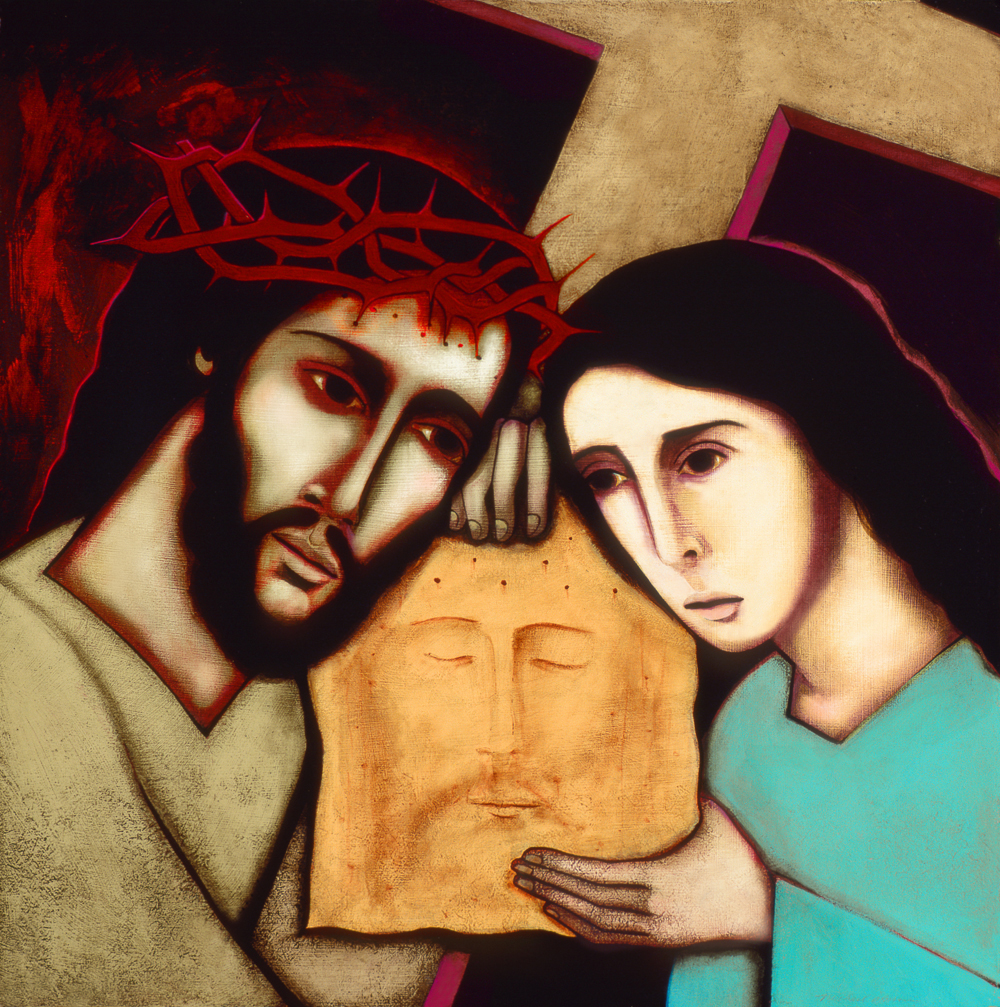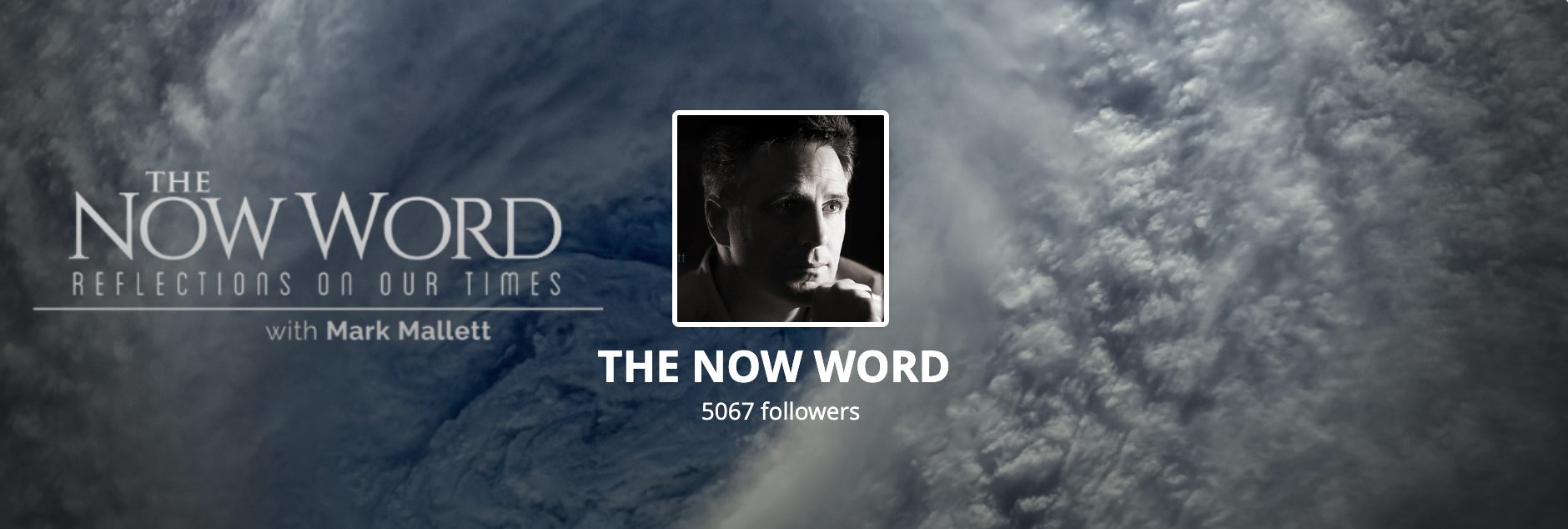
Just as Our Lord’s face was disfigured in His Passion, so too, the face of the Church has become disfigured in this hour. What does she stand for? What is her mission? What is her message? What does real Christianity look like? Is it the “tolerant”, “inclusive” wokism that seems to have possessed the upper echelons of the hierarchy and many laity… or something altogether different?
The Real Saints
Today, where does one find this authentic Gospel, incarnated in souls whose lives are a living, breathing palpation of the heart of Jesus; those who encapsulate He who is both “truth”[1]John 14:6 and “love”?[2]1 John 4:8 I dare say that even as we scan the literature on the Saints, we are often presented a sanitized and embellished version of their real lives.
I think of Thérèse de Lisieux and the beautiful “Little Way” she embraced as she moved beyond her pouty and immature years. But even then, few have spoken of her struggles toward the end of her life. She said once to her bedside nurse as she struggled with a temptation to despair:
I am surprised that there aren’t more suicides among atheists. —as reported by Sister Marie of the Trinity; CatholicHousehold.com
At one point, St. Thérèse seemed to portend the temptations that we are now experiencing in our generation — that of a “new atheism”:
If you only knew what frightful thoughts obsess me. Pray very much for me so that I do not listen to the Devil who wants to persuade me about so many lies. It is the reasoning of the worst materialists that is imposed upon my mind. Later, unceasingly making new advances, science will explain everything naturally. We shall have the absolute reason for everything that exists and that still remains a problem, because there remain very many things to be discovered, etc. etc. —St. Therese of Lisieux: Her Last Conversations, Fr. John Clarke, quoted at catholictothemax.com
And then there is the young Blessed Giorgio Frassati (1901 – 1925) whose love of mountaineering was captured in this classic photo… that subsequently had his pipe photo-shopped out.

I could go on with examples. The point is not to make ourselves feel better by listing the foibles of the Saints, much less excuse our own sinfulness. Rather, in seeing their humanity, in seeing their struggles, it actually gives us hope knowing that they were fallen like us. They labored, strained, were tempted, and even fell — but rose to persevere through the storms. It’s like the sun; one can only truly appreciate its grandeur and value precisely against the contrast of the night.
We do a great disservice to humanity, in fact, to put on a false front and hide our weaknesses and struggles from others. It’s precisely in being transparent, vulnerable and authentic that others are in some way healed and brought to healing.
He himself bore our sins in his body upon the cross, so that, free from sin, we might live for righteousness. By his wounds you have been healed. (1 Peter 2:24)
We are the “mystical body of Christ”, and hence, it is the healed wounds in us, revealed to others, through which grace flows. Note, I said healed wounds. For our unhealed wounds only wound others. But when we have repented, or are in the process of allowing Christ to heal us, it is our honesty before others alongside our faithfulness to Jesus that allows His power to flow through our weakness (2 Cor 12:9).[3]If Christ would’ve remained in the tomb, we would never have been saved. It is through the power of His Resurrection that we, too, were brought to life (cf. 1 Cor 15:13-14). Therefore, when our wounds are healed, or we are in the process of being healed, it is that very power of the Resurrection that we and others are encountering. It is in this that others encounter Christ in us, encounter real Christianity…
It is often said nowadays that the present century thirsts for authenticity. Especially in regard to young people, it is said that they have a horror of the artificial or false and that they are searching above all for truth and honesty. These “signs of the times” should find us vigilant. Either tacitly or aloud — but always forcefully — we are being asked: Do you really believe what you are proclaiming? Do you live what you believe? Do you really preach what you live? The witness of life has become more than ever an essential condition for real effectiveness in preaching. Precisely because of this we are, to a certain extent, responsible for the progress of the Gospel that we proclaim. —POPE ST. PAUL VI, Evangelii Nuntiandi, n. 76
The Real Crosses
I was struck last month by a simple word from Our Lady:
Dear children, the way to Heaven goes through the Cross. Do not be discouraged. —February 20, 2024, to Pedro Regis
Now, this is hardly new. But few Christians today fully understand this — pummeled between a false “prosperity gospel” and now a “woke” gospel. Modernism has so drained the message of the Gospel, the power of mortification and suffering, that no wonder people are opting to commit suicide in lieu of the Way of the Cross.

After a long day of baling hay…
In my own life, under unrelenting demands, I have often sought “relief” by doing something around the farm. But so often, I would find myself on the end of a broken piece of machinery, another repair, another demand. And I would become angry and frustrated.
Now, there is nothing wrong in wanting to find solace and rest; even Our Lord sought this in the mountains before dawn. But I was looking for peace in all the wrong places, so to speak — looking for perfection on this side of Heaven. And the Father always made sure the Cross, instead, would meet me.
I, too, would pout and complain, and like a sword against my God, I’d borrow the words of Teresa of Avila: “With friends like You, who needs enemies?”
As Von Hugel puts it: “How greatly we add to our crosses by being cross with them! More than half our life goes in weeping for things other than those sent us. Yet, it is these things, as sent and when willed and at last loved as sent, that train us for Home, that can form a spiritual Home for us even here and now.” Constantly resisting, kicking at everything is going to make life more complicated, difficult, hard. You can see it all as constructing a passage, a way to be traversed, a call to conversion and sacrifice, to new life. —Sister Mary David Totah, O.S.B., The Joy of God: Collected Writings of Sister mary David, 2019, Bloomsbury Publishing Plc.; Magnificat, February 2014
But God has been so patient with me. I am learning, instead, to abandon myself to Him in all things. And this is a daily struggle, and one that will continue until my last breath.
Real Sanctity
Servant of God Archbishop Luis Martínez describes this journey so many undertake to avoid suffering.
Every time we suffer a calamity in our spiritual life, we grow alarmed and think we have lost our way. For we have fancied an even road for ourselves, a footpath, a way strewn with flowers. Hence, upon finding ourselves in a rough way, one filled with thorns, one lacking all attraction, we think we have lost the road, whereas it is only that the ways of God are very different from our ways.
Sometimes the biographies of the saints tend to foster this illusion, when they do not fully reveal the profound story of those souls or when they disclose it only in a fragmentary manner, selecting solely the attractive and pleasing features. They call our attention to the hours that the saints spent in prayer, to the generosity with which they practiced virtue, to the consolations they received from God. We see only what is shining and beautiful, and we lose sight of the struggles, darkness, temptations, and falls through which they passed. And we think like this: Oh if I could live as those souls! What peace, what light, what love was theirs! Yes, that is what we see; but if we would look deeply into the hearts of the saints, we would understand that the ways of God are not our ways. —Servant of God Archbishop Luis Martinez, Secrets of the Interior Life, Cluny Media; Magnificat February, 2024

Carrying the cross through Jerusalem with my friend Pietro
I remember walking down the cobbled streets of Rome with the Franciscan Fr. Stan Fortuna. He danced and spun in the streets, exuding joy and a complete disregard for what others thought of him. At the same time, he would often say, “You can either suffer with Christ or suffer without Him. I choose to suffer with Him.” This is such an important message. Christianity is not a ticket to a painless life but a pathway to endure it, with God’s help, until we reach that eternal gate. In fact, writes Paul:
It is necessary for us to undergo many hardships to enter the kingdom of God. (Acts 14:22)
Atheists accuse Catholics, therefore, of a sadomasochistic religion. On the contrary, Christianity gives the very meaning of suffering and the grace to not only endure but embrace the suffering that comes to all.
The ways of God for attaining perfection are ways of struggle, of dryness, of humiliations, and even of falls. To be sure, there is light and peace and sweetness in the spiritual life: and indeed a splendid light [and] a peace above anything that could be desired, and a sweetness that surpasses all the consolations of earth. There is all this, but all in its proper time; and in each instance it is something transient. What is usual and most common in the spiritual life are those periods in which we are compelled to suffer, and which disconcert us because we were expecting something different. —Servant of God Archbishop Luis Martinez, Secrets of the Interior Life, Cluny Media; Magnificat February, 2024
In other words, we have often butchered the meaning of sanctity, reduced it to external appearances and shows of piety. Our witness is crucial, yes… but it will be empty and devoid of the power of the Holy Spirit if it is not an outflowing of an authentic interior life borne through true repentance, obedience, and thus, a real exercise of virtue.
But how to disabuse many souls of the idea that something extraordinary is required to become saints? To convince them, I would like to erase everything extraordinary in the lives of the saints, confident that in so doing I would not take away their sanctity, since it was not the extraordinary that sanctified them, but the practice of virtue we can all achieve with the help and grace of the Lord…. This is all the more necessary now, when sanctity is badly understood and only the extraordinary arouses interest. But one who seeks the extraordinary has very little chance of becoming a saint. How many souls never reach sanctity because they do not proceed by the path on which they are called by God. —Venerable Mary Magdalen of Jesus in the Eucharist, Toward the Heights of Union with God, Jordan Aumann; Magnificat February, 2024
This path Servant of God Catherine Doherty called The Duty of the Moment. Doing the dishes is not as impressive as levitating, bilocating, or reading souls… but when done with love and obedience, I am certain it will hold greater value in eternity than the extraordinary acts with which the Saints, if we are honest, had little control over other than accepting those graces with docility. This is the daily “martyrdom” that many Christians forget whilst dreaming of a red martyrdom…
Real Christianity

Painting by Michael D. O’Brien
The Veronicas of the world stand ready to wipe the face of Christ again, the face of His Church as she now enters her Passion. Who was this woman other than one who wanted to believe, who truly wanted to see the face of Jesus, despite the clamour of doubts and noise that assailed her. The world is thirsting for authenticity, said St. Paul VI. Tradition tells us that her cloth was left with an imprint of the Holy Face of Jesus.
Real Christianity is not the presentation of a phony unblemished face, devoid of the blood, dirt, spittle and suffering of our daily lives. Rather, it is being docile enough to accept the trials that produce them and humble enough to allow the world to see them as we imprint our faces, the faces of authentic love, upon their hearts.
Modern man listens more willingly to witnesses than to teachers, and if he does listen to teachers, it is because they are witnesses…. The world calls for and expects from us simplicity of life, the spirit of prayer, charity towards all, especially towards the lowly and the poor, obedience and humility, detachment and self-sacrifice. Without this mark of holiness, our word will have difficulty in touching the heart of modern man. It risks being vain and sterile. —POPE ST. PAUL VI, Evangelii Nuntiandi, n. 76
First published March 7, 2024.
Related Reading
Support Mark’s full-time ministry:
To journey with Mark in The Now Word,
click on the banner below to subscribe.
Your email will not be shared with anyone.
Follow Mark and the daily “signs of the times” on MeWe:
Listen on the following:
Footnotes
| ↑1 | John 14:6 |
|---|---|
| ↑2 | 1 John 4:8 |
| ↑3 | If Christ would’ve remained in the tomb, we would never have been saved. It is through the power of His Resurrection that we, too, were brought to life (cf. 1 Cor 15:13-14). Therefore, when our wounds are healed, or we are in the process of being healed, it is that very power of the Resurrection that we and others are encountering. |






